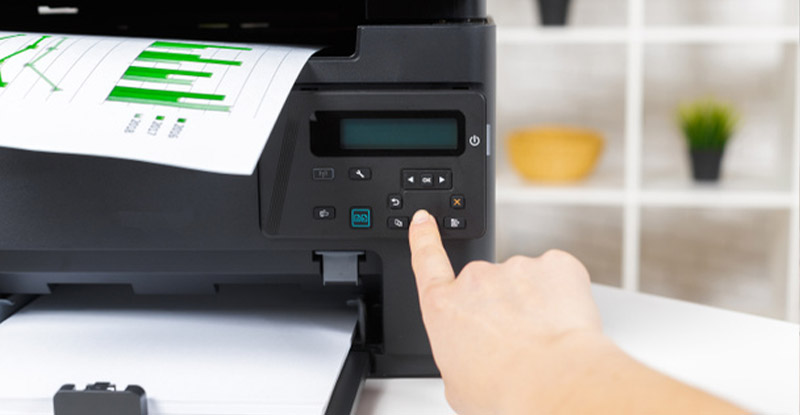Healthcare Billing:
How Claims Processing Automation Helps


Your passport to efficient claim automation awaits. Explore the intricacies of healthcare claims processing automation, discover its benefits, and learn practical steps to bid farewell to paper-intensive processes, paving the way for a financially flourishing future.
Picture this: you’re a healthcare provider, drowning in a sea of paperwork. Claim forms pile up like Everest, each one a potential portal to frustration, delays, and even financial loss. The dreaded words «denied claim» echo in your mind, equalling lost revenue. But wait! What if this paper purgatory could be transformed into a streamlined paradise? Welcome to the revolutionary world of medical claim automation.

Elevate your healthcare organization’s financial performance by embracing Artsyl ClaimAction. Streamline the billing and claims process, reduce errors, and accelerate reimbursements. Experience a revolution in revenue cycle management and prioritize what truly matters – delivering exceptional patient care.
The foundation of medical claims processing automation lies in advanced data capture and extraction capabilities. Utilizing optical character recognition (OCR) and intelligent data extraction, the system can accurately gather information from diverse claim forms, invoices, and documents.
A robust rules engine serves as a crucial building block, enabling automated validation of claims against predefined criteria. This ensures that claims adhere to regulatory requirements, coding standards, and internal policies, minimizing errors and ensuring compliance.
Seamless integration with electronic health records systems is essential for a comprehensive healthcare claims automation solution. This integration facilitates the retrieval of patient data, diagnosis codes, and other pertinent information, enhancing the accuracy and completeness of claims.
Adjudication algorithms play a pivotal role in automating the evaluation and decision-making process for claims. These algorithms assess claims based on predefined rules, helping identify valid claims for quick approval while flagging potential issues for further review.
RELATED: Streamlining Healthcare Billing: Simplifying UB-04 Form Processing
Implementing workflow automation ensures a systematic and efficient approval process. It streamlines the movement of claims through different stages, from initial submission to final adjudication, reducing processing times and providing transparency in the approval and denial processes.
Transitioning from paper-based to electronic claim submission is a key building block. Automation enables the generation and submission of electronic claims, promoting faster processing, reducing administrative overhead, and enhancing the overall efficiency of the claims lifecycle.
Security is a non-negotiable aspect of healthcare claims processing automation. Implementing robust measures to safeguard protected health information (PHI) ensures compliance with data privacy regulations and builds trust in the automation system.
By integrating these building blocks, healthcare organizations can establish a comprehensive and efficient medical claims processing automation system that enhances accuracy, compliance, and overall operational efficiency.
Precision in Practice with Artsyl ClaimAction
Precision matters in healthcare billing. Artsyl ClaimAction ensures accuracy through advanced automation, reducing manual intervention and billing errors. Elevate your practice’s efficiency and precision, enabling your team to focus on patient care while Artsyl handles the intricacies of claims processing.
Book a demo now
First of all, embracing healthcare claims processing automation significantly enhances operational efficiency. Automation reduces manual intervention, accelerates claims processing times, and minimizes errors, ensuring a streamlined workflow that saves time and resources.
Think of claims processing automation as a magic wand for your practice. Automation not only banishes the paper blizzard, but also conjures up a host of benefits. Automation speeds up the process, ensuring swift claims processing and quicker cash flow. In addition, automation minimizes human error, leading to fewer denials and more accurate claims.
Accelerate Reimbursements, Elevate Patient Care
Time is of the essence in healthcare. Artsyl ClaimAction accelerates reimbursements, ensuring financial stability for your organization. By automating claims processing, we empower your team to dedicate more time to patient care, fostering a healthcare environment where both financial and medical well-being thrive.
Book a demo now
Medical billing, with its mountains of paperwork and complex coding, can be a major bottleneck for efficiency. However, claims processing automation offers a powerful solution, streamlining the process and boosting efficiency in several key ways:

Contact Us for an in-depth
product tour!
RELATED: What Is HCFA in Medical Billing?
Ultimately, claims processing automation offers a win-win situation for healthcare providers, staff, and patients. By improving efficiency, reducing errors, and enhancing the patient experience, automation paves the way for a more financially stable and patient-centered healthcare system.
Achieve Excellence with ClaimAction
Unleash the full potential of your healthcare billing with Artsyl ClaimAction. Unlock efficiency through automated data capture, validation, and adjudication. Experience a transformative approach that minimizes errors, improves compliance, and sets the stage for excellence in healthcare administration.
Book a demo now
Healthcare billing refers to the process of generating and submitting claims to insurance providers for reimbursement of services rendered by healthcare providers. It involves the creation of invoices, coding of procedures, and submission of claims to facilitate payment for medical services.
Claims processing automation involves the use of technology and software to streamline and expedite the handling of medical claims. This automation encompasses tasks such as data capture, validation, adjudication, and submission, reducing manual intervention, minimizing errors, and accelerating the overall claims lifecycle.
Adjudication in healthcare refers to the evaluation and decision-making process used by insurers to assess the validity of claims. It involves reviewing claims against predefined rules, coverage policies, and coding standards to determine whether to approve, deny, or request additional information for a claim.
Electronic Health Records (EHR) are digital versions of patients’ paper charts, containing comprehensive information about their medical history, diagnoses, medications, treatment plans, immunization dates, allergies, radiology images, and laboratory test results. Integration with EHR systems is crucial for comprehensive and accurate claims processing.
Protected Health Information (PHI) refers to any information about health status, provision of healthcare, or payment for healthcare services that can be linked to an individual. PHI must be safeguarded to ensure patient privacy and comply with health information privacy regulations.
Optical Character Recognition (OCR) is a technology that converts different types of documents—such as scanned paper documents, PDFs, or images captured by a digital camera—into editable and searchable data. In medical billing, OCR is used for extracting information from physical documents, such as claim forms.

RELATED: UB04 and UB92 Forms in Medical Billing
Workflow automation in healthcare billing involves the use of technology to automate and streamline the sequence of tasks involved in processing claims. It includes the systematic movement of claims through different stages, ensuring efficiency, reducing manual efforts, and improving overall process transparency.
Coding standards in healthcare refer to universally accepted guidelines for assigning alphanumeric codes to medical diagnoses, procedures, and services. These codes, such as ICD-10 and CPT codes, are essential for accurate claims processing, reimbursement, and statistical reporting.
In conclusion, the integration of medical billing and claims automation heralds a transformative era in the healthcare industry. As we navigate this landscape, the benefits become evident—improved accuracy, expedited processing times, enhanced compliance, and streamlined revenue cycles. This synergy of technology and healthcare administration not only ensures financial viability for providers but also translates to better patient care.
Embracing automation is a necessary revolution, reshaping the healthcare landscape for the better, one automated claim at a time.
Future-Proof Your Healthcare Practice
The future of healthcare demands innovation. Future-proof your practice with Artsyl ClaimAction. Stay ahead in an evolving landscape by embracing cutting-edge automation that not only streamlines claims processing but also positions your organization at the forefront of efficient, patient-centric healthcare.
Book a demo now
Claims processing automation in healthcare utilizes technology to streamline tasks such as data capture, validation, adjudication, and submission. It aims to reduce manual efforts, minimize errors, and expedite the entire claims lifecycle.
Automation positively influences revenue cycle management by accelerating the claims process, reducing billing errors, optimizing cash flow, and enabling quicker reimbursements. It enhances financial performance and operational efficiency within healthcare organizations.
Medical Claim Forms that are particularly suitable for processing automation include widely used formats such as CMS-1500 (Health Insurance Claim Form or HCFA) and UB-04 (CMS-1450, Institutional Claim Form). ClaimAction, our cutting-edge automation solution, excels in streamlining the processing of these forms. By leveraging ClaimAction, you can automate the extraction, validation, and processing of critical information from these diverse medical claim forms, ensuring efficiency, accuracy, and compliance throughout the healthcare claims automation process.
Automation in healthcare claims processing offers numerous benefits, including improved accuracy, faster claim processing times, reduced administrative costs, enhanced compliance with regulations, and increased efficiency in handling a large volume of claims.
Adjudication involves insurers evaluating claims against predefined rules, coverage policies, and coding standards. The goal is to determine the validity of a claim, leading to approval, denial, or a request for additional information.
Integration with EHR systems is crucial for accurate and comprehensive claims processing. It ensures that claims are based on up-to-date patient information, enhancing accuracy and completeness. Many healthcare claims automation solutions are designed to seamlessly integrate with EHR systems, enabling efficient data exchange and ensuring comprehensive patient information is utilized for accurate claims processing.
PHI includes any information about an individual’s health, healthcare services received, or payment for those services. Protecting PHI is vital for patient privacy and compliance with health information privacy regulations.
Healthcare claims automation systems prioritize security measures to safeguard Protected Health Information. These systems implement encryption, access controls, and other security protocols to ensure data privacy and compliance with healthcare regulations.
Optical Character Recognition (OCR) technology is vital in healthcare billing as it facilitates the conversion of physical documents into digital, editable data. OCR automates the extraction of information from claim forms, invoices, and other documents, streamlining the billing process.

OCR technology is used in healthcare billing to extract information from physical documents, such as claim forms. It converts scanned or photographed documents into editable and searchable data, facilitating efficient data capture.
Workflow automation streamlines the sequence of tasks involved in claims processing. It ensures systematic movement of claims through different stages, enhancing efficiency, reducing manual efforts, and improving overall transparency.
Coding standards, such as ICD-10 and CPT codes, provide universally accepted guidelines for assigning alphanumeric codes to medical diagnoses, procedures, and services. Accurate coding is essential for precise claims processing, reimbursement, and statistical reporting.
Automated systems utilize predefined rules and algorithms to validate claims against regulatory requirements and coding standards. By enforcing compliance checks, automation minimizes errors, ensures adherence to regulations, and mitigates the risk of penalties.